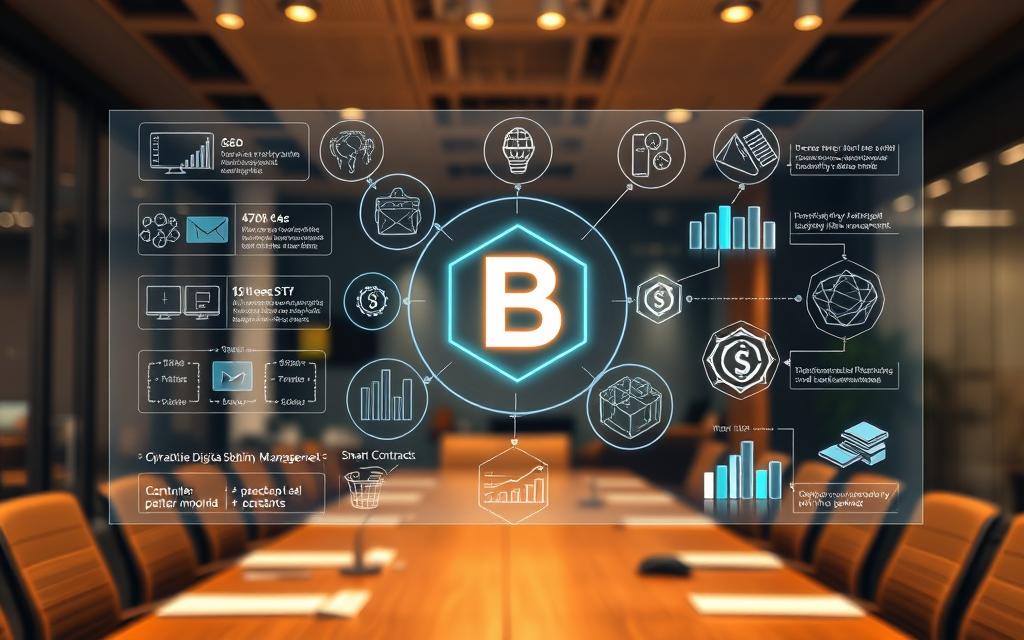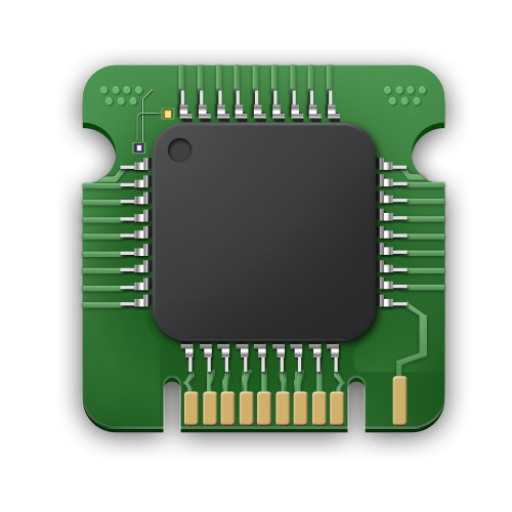Blockchain has emerged as a revolutionary technology, transforming the way data is recorded and transactions are conducted. At its core, it is a distributed ledger that maintains synchronized data across multiple participants, ensuring security through cryptography.
This decentralized approach differs significantly from traditional centralized systems, offering a transparent and immutable record of transactions across a network. The key characteristics of blockchain include immutability, transparency, security, and distributed consensus, making it a transformative technology across various industries.
For those looking to dive deeper into blockchain development, the demand for expertise is skyrocketing, with companies like Amazon and Google leveraging its potential.
Understanding Blockchain Technology
At its core, blockchain is a distributed ledger technology that enables secure and transparent data management. This technology allows for the recording of transactions across multiple computers in a way that ensures security, transparency, and immutability.
Definition and Core Concepts
Blockchain technology is defined as a distributed digital ledger that records transactions across multiple computers. The core concepts of blockchain include distributed consensus, cryptographic security, and the chain structure that links blocks of transaction data. By eliminating the need for trusted third parties, blockchain creates a system where participants can verify transactions directly.
The use of cryptography, including encryption, secures the data and ensures that any tampering is evident. This makes blockchain a reliable technology for various applications, including financial services, where it can decentralize trade processing by enabling simpler direct peer-to-peer transactions.
Brief History and Evolution
Blockchain was invented by Satoshi Nakamoto in 2008 as the underlying technology for Bitcoin. Since then, it has evolved from a cryptocurrency-focused technology to a versatile platform with applications across various industries. Key milestones in blockchain evolution include Bitcoin’s launch in 2009 and the development of smart contract platforms like Ethereum in 2015.
As blockchain technology continues to evolve, it is transitioning from first-generation blockchains to more sophisticated systems with enhanced functionality, scalability, and energy efficiency. This evolution is expected to further expand the adoption of blockchain technology across different sectors.
| Year | Event | Description |
|---|---|---|
| 2008 | Invention of Blockchain | Satoshi Nakamoto invents blockchain as the underlying technology for Bitcoin. |
| 2009 | Launch of Bitcoin | Bitcoin is launched, marking the first practical application of blockchain technology. |
| 2015 | Development of Ethereum | Ethereum is developed, introducing smart contract functionality to blockchain technology. |
“Blockchain is a technology that allows us to distribute and synchronise data across different parties, using cryptography to secure the data and ensure any tampering is evident.”
What is Blockchain Technology and Its Fundamental Components
At its core, blockchain is a distributed ledger technology that records transactions across a network of computers. This technology has several fundamental components that work together to provide a secure, decentralized, and transparent data management system.
Distributed Ledger Technology Explained
Distributed Ledger Technology (DLT) is the foundation of blockchain, enabling multiple parties to maintain synchronized copies of the same database. DLT eliminates the need for central authorities by distributing verification responsibilities across network participants. This allows for a more secure and transparent way of managing data.
Blocks, Chains, and Cryptographic Hashing
A block is a container for transaction data, including timestamps, transaction details, and a reference to the previous block. Cryptographic hashing creates a unique digital fingerprint for each block, ensuring data integrity and creating the chain structure. Each block contains a hash of the previous block, creating an unbreakable chain that makes the ledger tamper-evident.
Consensus Mechanisms
Consensus mechanisms enable network participants to agree on the validity of transactions. Various consensus mechanisms, including Proof of Work, Proof of Stake, and Practical Byzantine Fault Tolerance, solve the double-spending problem and maintain the integrity of the blockchain without central authority.
| Component | Description | Functionality |
|---|---|---|
| Distributed Ledger Technology | Multiple parties maintain synchronized copies of the same database | Eliminates the need for central authorities |
| Blocks and Chains | Containers for transaction data, linked together through cryptographic hashing | Creates a tamper-evident ledger |
| Consensus Mechanisms | Enable network participants to agree on transaction validity | Maintains the integrity of the blockchain |

How Blockchain Works: A Step-by-Step Breakdown
Understanding how blockchain technology operates requires a step-by-step examination of its core processes. The lifecycle of a blockchain transaction is complex, involving multiple stages from initiation to confirmation.
Transaction Creation and Verification
A blockchain transaction begins with the sender creating and digitally signing a transaction. The digital signature is crucial as it verifies the sender’s identity and ensures the transaction’s integrity. Network participants, or nodes, then verify the transaction by checking the digital signature and confirming that the sender has sufficient resources to complete the transaction.
Block Formation and Validation
Once verified, transactions are grouped into blocks. Miners or validators compete to add these blocks to the blockchain by solving complex mathematical puzzles, a process known as mining. The first miner to solve the puzzle gets to add the block to the blockchain and is rewarded with cryptocurrency tokens.
Proof of Work vs. Proof of Stake
Blockchain networks use consensus mechanisms like Proof of Work (PoW) or Proof of Stake (PoS) to validate transactions. PoW requires miners to solve complex puzzles, while PoS selects validators based on the amount of cryptocurrency they hold and are willing to “stake.” The Ethereum network’s transition from PoW to PoS, known as “The Merge,” represents a significant evolution in blockchain technology, offering a more energy-efficient alternative.
The choice between PoW and PoS affects the energy consumption and security of the blockchain. While PoW is secure, it consumes a lot of energy. In contrast, PoS is more energy-efficient but requires a different set of security measures.
Types of Blockchain Networks
The blockchain ecosystem comprises multiple network types, catering to different needs and use cases. Understanding these variations is crucial for determining the most suitable blockchain for specific applications.
Public Blockchains
Public blockchains are open networks where anyone can participate, view transactions, and contribute to the consensus process without permission. Examples include Bitcoin and Ethereum, known for their transparency and security through mass participation. However, they face limitations regarding scalability and privacy.
Private Blockchains
Private blockchains, on the other hand, are permissioned networks controlled by a single organization. They offer greater privacy, efficiency, and control but at the cost of reduced decentralization and transparency. Learn more about the types of and their implications.
Consortium and Hybrid Blockchains
Consortium blockchains represent a semi-decentralized system where a group of organizations collectively maintain the network. Hybrid blockchains combine elements of both public and private blockchains, allowing organizations to keep sensitive data private while benefiting from public validation.

| Blockchain Type | Key Characteristics | Use Cases |
|---|---|---|
| Public | Open, transparent, decentralized | Cryptocurrencies, open-source projects |
| Private | Permissioned, controlled, private | Enterprise solutions, internal operations |
| Consortium | Semi-decentralized, collaborative | Industry collaborations, supply chain management |
| Hybrid | Combines public and private elements | Complex business applications, mixed environments |
In conclusion, the choice of blockchain network depends on the specific requirements of the application or use case, considering factors such as security, data integrity, and the need for information privacy.
Business Benefits and Applications of Blockchain
Blockchain technology is transforming businesses across various industries by enhancing efficiency, transparency, and security. This transformation is evident in several key areas, including financial services, supply chain management, healthcare, and the use of smart contracts.
Financial Services and Banking
In the financial sector, blockchain is being utilized to streamline payment processing, reduce settlement times, and eliminate intermediaries. For instance, banks are adopting blockchain to simplify compliance procedures, such as “know your customer” (KYC) processes, which can be costly and outdated. A new DLT system could require only one KYC verification per customer, driving efficiency gains and cost reduction. Learn more about the different types of information and how they integrate with blockchain.
Supply Chain Management
Blockchain is also improving supply chain management by enhancing traceability, verifying ethical sourcing, and enabling real-time tracking of goods. This technology ensures that products are genuine and can be tracked from the manufacturer to the consumer, reducing the risk of counterfeit goods.
Healthcare and Data Security
In healthcare, blockchain is used to secure patient records, ensure data privacy compliance, and create tamper-proof audit trails for sensitive medical information. This not only protects patient data but also ensures that it is accessible to authorized personnel when needed.
Smart Contracts and Automated Processes
Smart contracts are self-executing agreements with terms directly written into code. They automatically enforce obligations when predefined conditions are met, reducing the need for intermediaries and minimizing disputes. This technology streamlines business processes and enables automated compliance with regulatory requirements.

The use of blockchain technology across these industries demonstrates its potential to create new opportunities for businesses by decreasing risk, reducing compliance costs, and driving automated and secure contract fulfillment. As companies continue to adopt and integrate blockchain into their operations, the benefits of increased transparency, security, and efficiency will continue to grow.
Blockchain, Cryptocurrency, and Beyond
The synergy between blockchain technology and cryptocurrencies has paved the way for new financial instruments and digital assets. Blockchain enables buyers and sellers to trade cryptocurrencies online without the need for banks or other intermediaries.
The Relationship Between Blockchain and Cryptocurrencies
Blockchain is the underlying infrastructure for cryptocurrencies, providing a secure, transparent, and immutable ledger for transactions. Bitcoin pioneered the use of blockchain for digital currency, creating a system for peer-to-peer value transfer without intermediaries. Cryptocurrencies leverage blockchain’s security features to create digital assets with verifiable scarcity and ownership.
The use of blockchain in cryptocurrencies has enabled fast and secure transactions, making it an attractive option for those looking to transfer value online. The transparency and immutability of blockchain technology also provide a level of trust and accountability in cryptocurrency transactions.
| Key Features | Blockchain | Cryptocurrencies |
|---|---|---|
| Security | High | High |
| Transparency | High | High |
| Immutability | High | High |
NFTs and Digital Assets
Non-Fungible Tokens (NFTs) represent unique digital assets that can be bought, sold, and traded on blockchain networks. Unlike cryptocurrencies, NFTs are non-interchangeable and represent ownership of specific items or content, such as digital art or collectibles.
NFTs are minted on smart-contract blockchains like Ethereum or Solana, and their unique identities and ownership can be verified through the ledger. This has opened up new opportunities for creators to monetize their digital content and for collectors to purchase and own unique digital assets.

The emergence of NFTs and other digital assets has broader implications for representing ownership of both digital and physical assets on blockchain networks. As the technology continues to evolve, we can expect to see new applications and use cases for blockchain beyond cryptocurrencies.
Conclusion: The Future of Blockchain Technology
As blockchain technology continues to mature, its applications are expanding beyond cryptocurrency to become a versatile enterprise solution. The transformative potential of blockchain across various industries is vast, with McKinsey estimating two primary development horizons for the next decade.
The growth of Blockchain-as-a-Service (BaaS) platforms is making the technology more accessible to businesses without extensive technical expertise. Moreover, interoperability between different blockchain networks and traditional systems is crucial for widespread adoption. This interoperability will enable disparate networks to view, access, and share data while maintaining integrity.
However, blockchain faces challenges such as scalability limitations, energy consumption concerns, and regulatory uncertainty. Addressing these issues requires collaboration between industry stakeholders, technology developers, and regulators. As blockchain evolves, it is likely to integrate with other emerging technologies like artificial intelligence and the Internet of Things.
Successful implementation of blockchain requires careful consideration of business needs and organizational readiness. By doing so, businesses can harness the potential of blockchain to drive innovation and growth.







